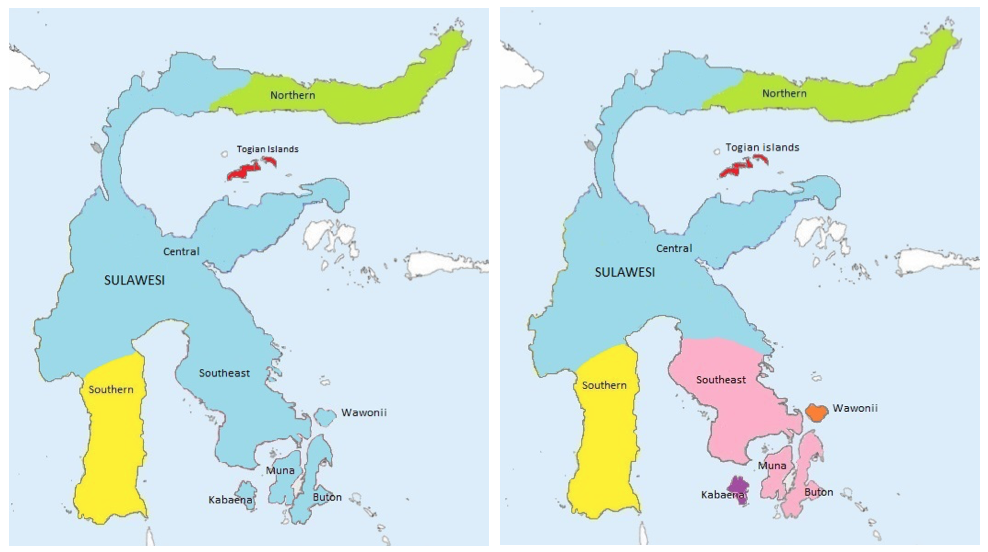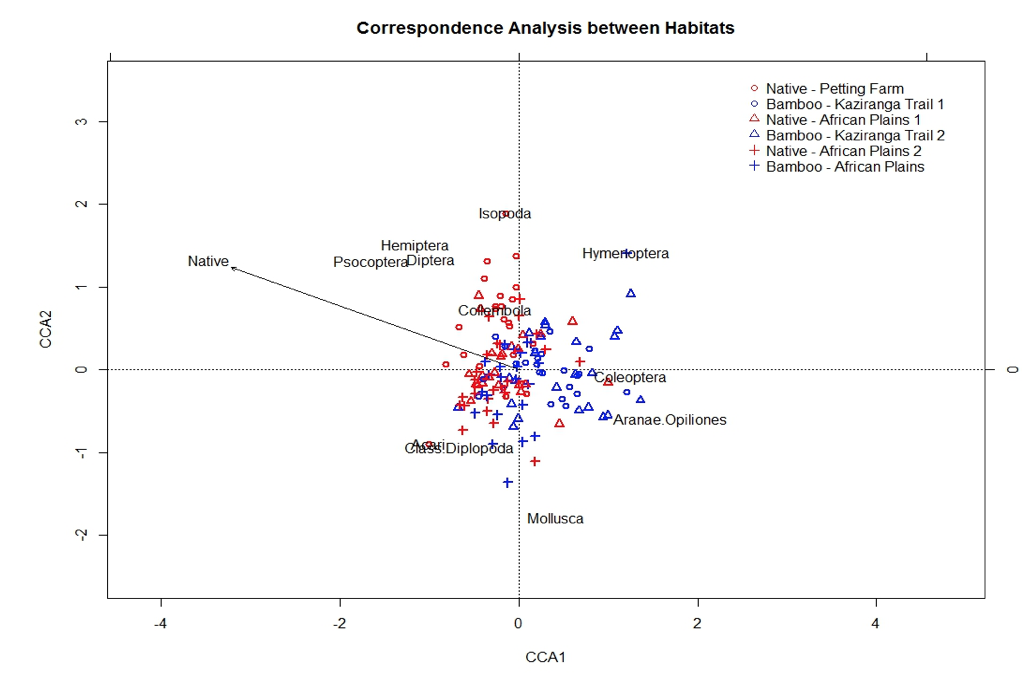One of the best parts of my PhD in the Zoology Department at TCD has been working with undergraduate students. The strength, creativity, and dedication of the students shines brightest in their fourth-year theses. Like many programmes, TCD requires final year students to plan, conduct, analyse and report a novel piece of science- whether it’s an experiment, field study or meta-analysis. The results of these projects often blow us all away and EcoEvo@TCD would like to highlight some of the excellent work done by our awesome undergraduate co-workers. The following summaries were submitted by the authors listed- feel free to contact the authors with job offers/congratulations.
Maureen Williams
Twitter | @modubs11
Three new sub-species of Sulawesi Babblers have been discovered?!
My final year thesis was a phylogenetic reassessment of the Sulawesi Babbler (Trichastoma celebense). Like many birds from this area of Indonesia, this species has been poorly studied. This project was prompted by evidence of song divergence of the Babblers from the island of Kabaena (noticed by Dr. David Kelly and Prof. Nicola Marples). In birds, song divergence is one of the first signs of a species diverging. In order to investigate the taxonomy of Sulawesi Babblers we extracted DNA from the feathers of Sulawesi Babblers from different islands of Sulawesi and created a phylogeny using the mitochondrial ND3 gene. These analyses provided evidence of cryptic diversity within Sulawesi Babblers in SE Sulawesi. We discovered that Trichastoma celebense rufofuscum might contain up to three unrecognised subspecies! However, further analyses of barcoding genes would be required before revisions to the taxonomy of the Sulawesi Babblers are made. Hopefully these findings will highlight cryptic biodiversity in Sulawesi’s fauna and encourage researchers to investigate other species.

T. c. celebense (green), T. c. rufofuscum (blue), T. c. finschi (yellow), T. c. togianense (red), SE Sulawesi population (pink), Kabaena population (purple) and Wawonii population (orange).
Alice Clark
Email | aclark@tcd.ie

During my thesis, I conducted observations on the Little Tern colony at Kilcoole, Co. Wicklow, where I met loads of wonderful people and gained lots of valuable experience. My study mainly focused on attendance rates of parents depending on their location within the colony. I found that longer proportions of attendance positively affected hatchling success. However, I found this to be the same across the colony, irrespective of position. Along with this, I found other useful insights into the colony, such as parents which nested earlier in the season tended to produce more hatchlings compared to conspecifics nesting later.
Andrew McManus
Twitter | @andz011
Email | amcmanus@tcd.ie
Glamourous Gammarus
My final year project looked the effect of parasitism and temperature variation on freshwater amphipods Gammarus. This project is relevant to current events given that it relates to global warming and its potential effects. Although my results were not statistically significant, this project has provided the basis for future studies and was also an opportunity to explore novel techniques for use in further research. I enjoyed the mixture of fieldwork and lab work, and I made some great friends along the way.

Floriane O’Keefe
Email | okeefffl@tcd.ie
My project was a desktop based one, focusing on the nightly ranging behaviour of a population of badgers in Co. Wicklow. I found a couple of interesting things that haven’t been seen in other populations before. It looks like from my project that badgers may seasonally maintain their weight by altering the distances they move, rather than just changing the amount of food they eat. They rapidly increase their weight by moving significantly less distances compared to when they are maintaining their weight. I have a lot of respect for these little cardio lovers now!

Megan Farrelly
Email | farrem17@tcd.ie
Eco-evolutionary Dynamics and Ireland
My project looked at the genetic structuring of Plantago lanceolata, ribwort plantain, across Ireland and attempted to correlate this to geographic structuring and other environmental variables. It was pretty cool to see that the structuring went against basic principles like Isolation by Distance, where you would expect populations with more distance between them to be more genetically distant. The two sites from Cork, one urban and one an undisturbed meadow, ended up being more genetically dissimilar than would be expected if following isolation by distance, which showed how much of an impact human interference can have on populations – be it through relocations, isolation of populations etc. My sample size was too small to confidently make any inferences about the drivers of the observed genetic structuring but the results are interesting nonetheless.

Jessica Ray
Twitter | @Jess_m_ray
Email | jray@tcd.ie
For my thesis I surveyed the terrestrial invertebrate population of Dublin Zoo using pitfall traps. Taking a close look at two distinct habitat types – bamboo forest and native Irish woodland – I compared the invertebrate abundance, diversity and community composition between them. A detailed analysis of the terrestrial invertebrate populations within Dublin Zoo has never before been conducted. Consequently, Dublin Zoo had no baseline from which to work in the area of invertebrate biodiversity monitoring and conservation. My project provided that baseline by identifying 2,624 invertebrates to taxonomic order, and providing analyses on temporal population changes and community composition.

Laura Kane
Email | kanela@tcd.ie


One Reply to “The thesis collection 2018”